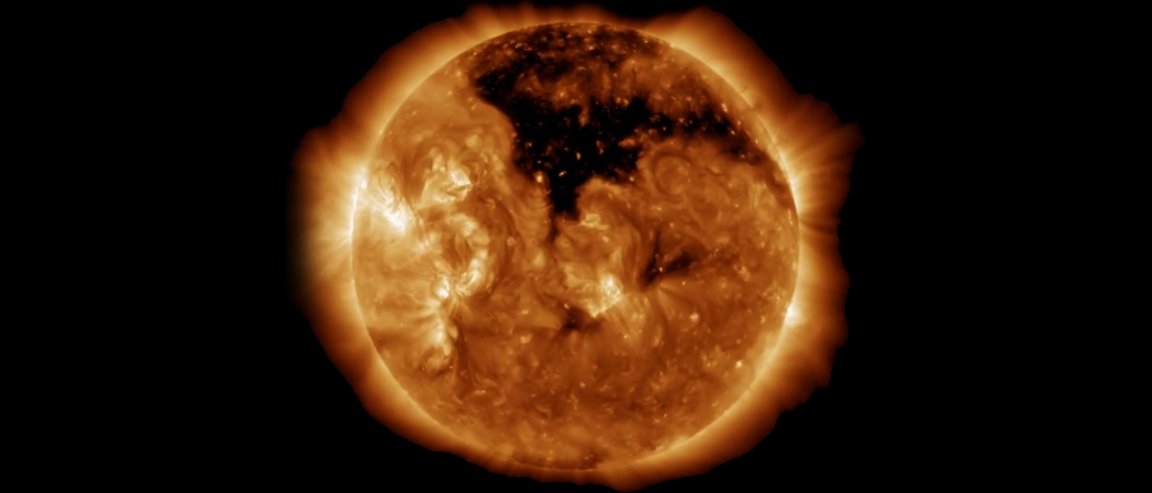
A Coronal Hole
Space weather has some pretty weird rules and even weirder effects. For example, just look at what appears to be a massive hole in the sun.
Yes, you read that correctly. NASA’s Solar Dynamics Observatory spacecraft spotted something peculiar about the Sun: it has a huge spot of “darkness” on its face. But as it turns out, that’s pretty normal.

The spot in the Sun’s face is something called a “coronal hole.” Tom Yulsman of Discover’s ImaGeo blog explains:
“A coronal hole is a place where where the Sun’s magnetic field opens out into interplanetary space, allowing hot material from the corona to speed outward. As a result, these areas have very little hot plasma compared to their hotter, brighter surroundings. So they appear much darker.”
NASA itself notes that these coronal holes can appear for weeks or even months at a time, and can take up as much as a quarter of the sun’s surface.
No Cause for Alarm
There’s really no cause for alarm here, but these dark spots do have the potential to have some irritating effects on Earth. Solar winds released from the corona can form solar storms, which can disrupt satellite and radio communication systems.
These solar storms are called Geomagnetic Storms, and they really do bite. They are formed by coronal mass ejections, which is when tons of plasma ejected from the sun carry a magnetic field that disrupts Earth’s magnetosphere. It then peels open like an onion, allowing energetic solar wind particles to stream down the field lines to hit the atmosphere over the poles. In layman’s terms, it lowers the Earth’s magnetic field strength, lowering the barriers that prevent space weather from interfering with Earth.
This affects GPS, Global Navigation Satellite System (GNSS), and creates harmful geomagnetic induced currents (GICs) in the power grid and pipelines.
But it does make for more beautiful auroras.